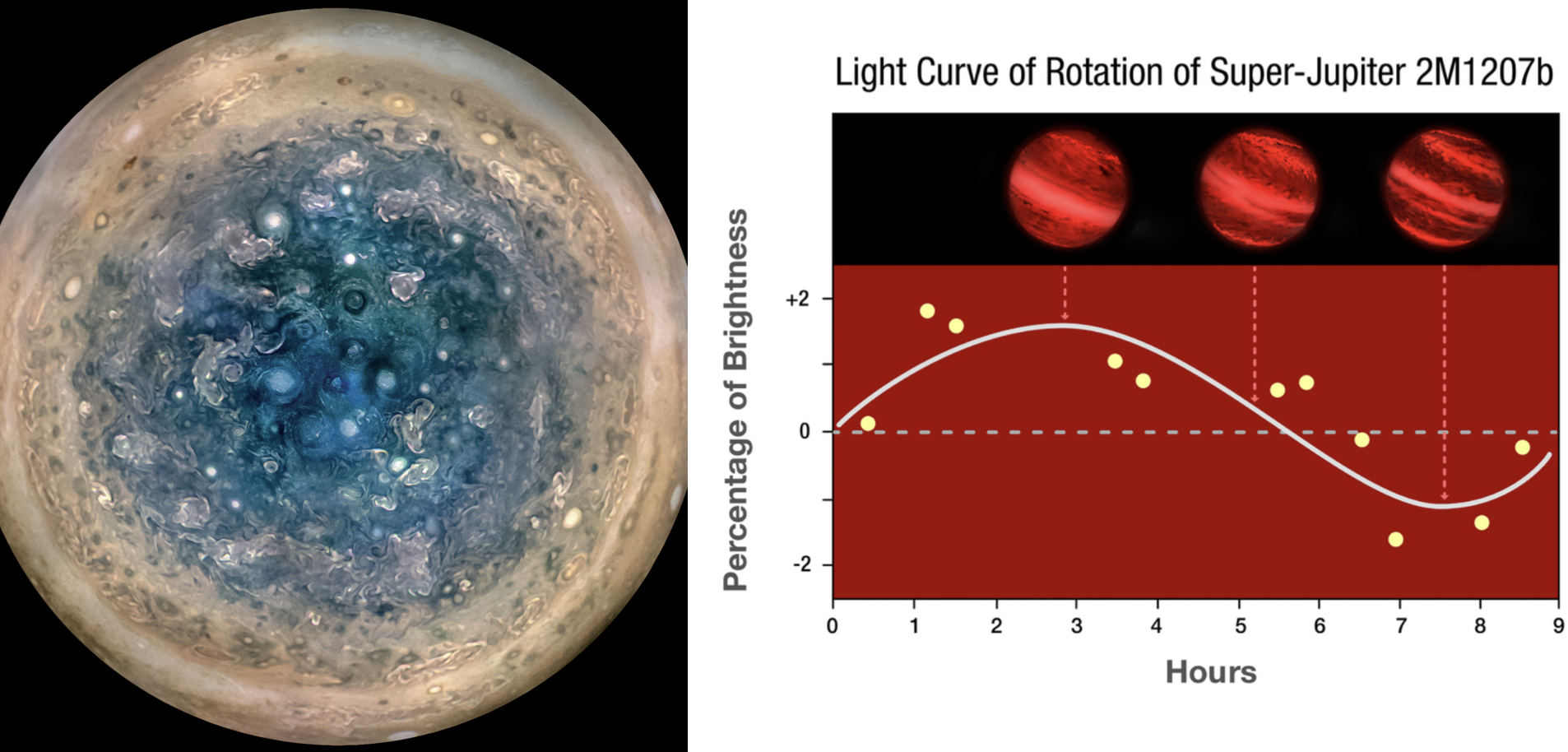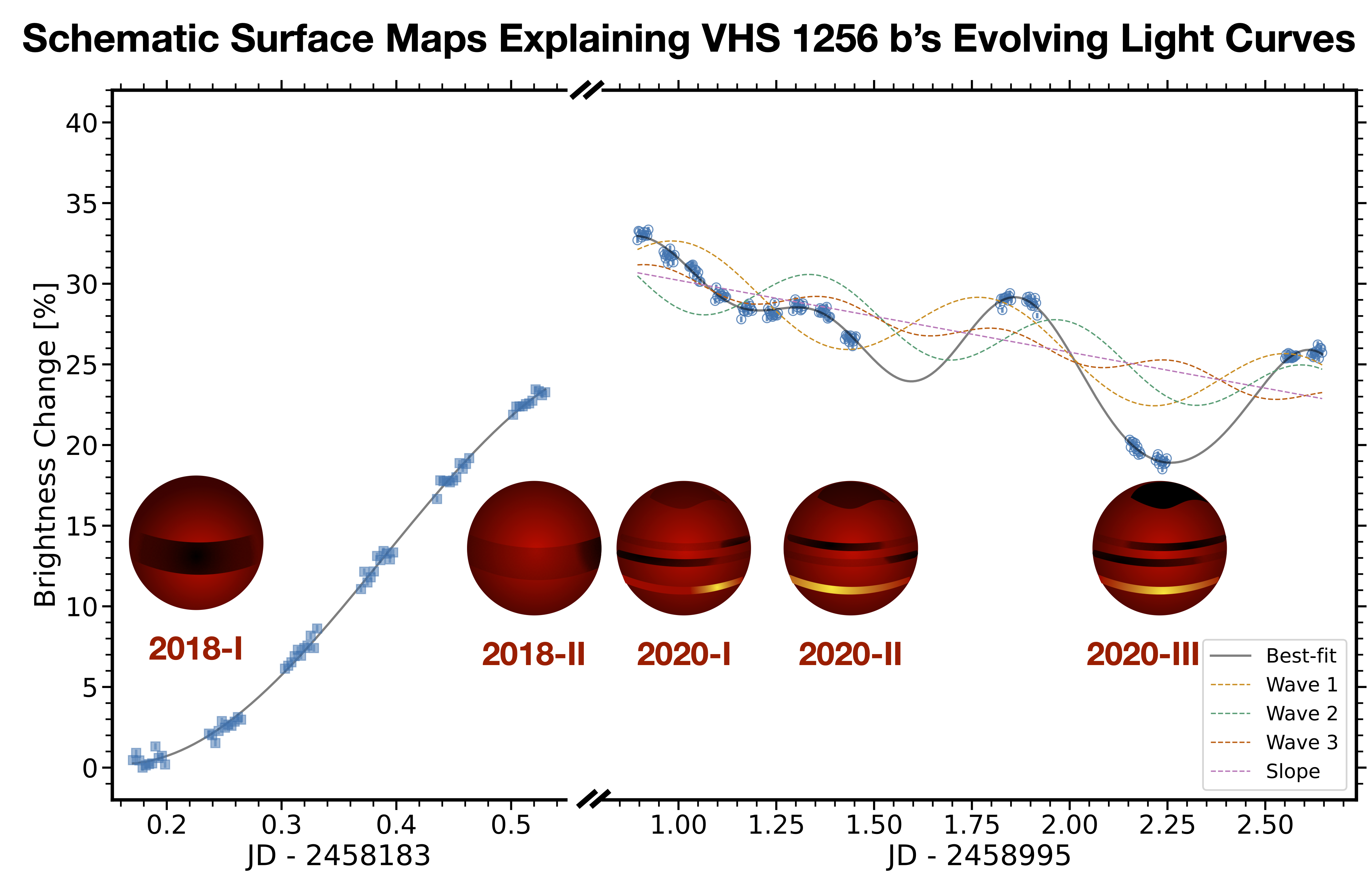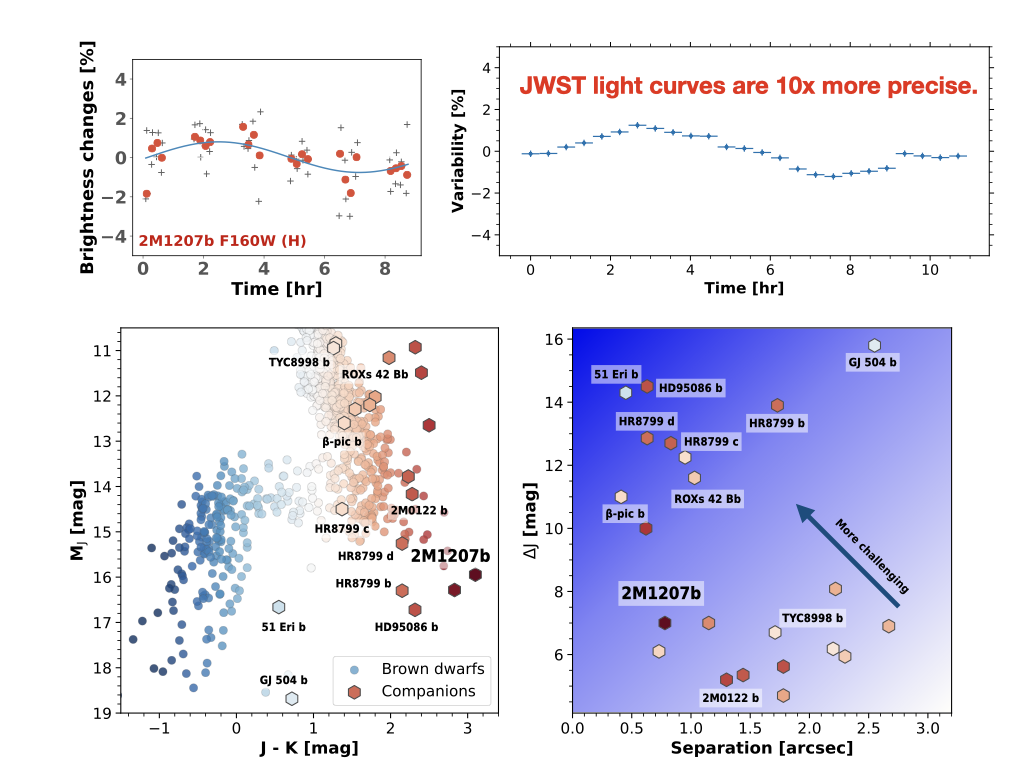Unraveling the 3D Structures in Planetary Atmospheres
Projects
1. Monitor variable planets and brown dwarfs with JWST.
Our team will undertake time series observations of the captivating 4 Jupiter mass companion, 2M1207b. Armed with the powerful NIRSpec IFU, we will capture one full rotation, obtaining mesmerizing 1 to 5 micron, phase-resolved spectra of this planet with heterogeneous atmosphere. These results will serve as a catalyst, optimizing future monitoring observations of exoplanets and paving the way for compelling proposals in upcoming cycles.
2. What processes shape the 3D structures in planetary atmosphere and drive their evolution?
In the past decade, Hubble Space Telescope has collected a wealth of brown dwarf light curve data that enable a deep dive into their patchy atmospheres. In parallel, remarkable progress in atmospheric and general circulation models has suggested the physical processes driving the formation of 3D atmospheric structures. Merging these valuable findings, we strive to unravel the underlying mechanisms that shape the atmospheres of planets.
3. Mapping exoplanets with ground-based observations.
In the realm of close-in planet observation, ground-based large-aperture telescopes outshine their space-based counterparts with superior high-contrast imaging capabilities. At UVa, we take this advantage and elevate high-contrast monitoring observing strategies to new heights, harnessing the potent Large Binocular Telescope. We also use UVa’s access to the APO 3.5-m telescope, enabling us to embark on long time-baseline observations of variable brown dwarfs.

Atmospheres of exoplanets hold vital clues about their past and present. Governed by internal convection and external irradiation, these planetary atmospheres take shape as heterogeneous structures, exhibiting captivating variations in three dimensions. These remarkable formations find vivid representation in the awe-inspiring imagery of planets within our solar system. Characterizing exoplanets presents critical challenges, and among them, the observational mapping of these intricate structures and comprehending the underlying mechanisms that shape their atmospheres stand at the forefront. The acquisition of time series observations, enabling the capture of rotationally modulating light curves of brown dwarfs and exoplanets, has emerged as a crucial means of obtaining direct evidence concerning patchy clouds and the evolution driven by circulation in these objects.<br/>

I have been at the forefront of using time-resolved observations to probe atmospheric structures of brown dwarfs and exoplanets. In Zhou et al. (2016), I led the first discovery of rotational modulations in a high-contrast planetary-mass companion. With the modulation amplitudes observed in multi-band Hubble Space Telescope (HST) light curves, we determined that condensate clouds in the four Jupiter-mass substellar companion 2M1207b are similar to those in higher mass brown dwarfs. As part of the HST large treasury program Cloud Atlas, we have delved deeper into comprehensive studies on rotation rates and cloud properties of substellar companions (e.g., Zhou et al. 2018, 2019, 2020a). In our most recent ventures, we have taken the helm in analyzing the light curves of L-dwarf companion VHS 1256 b, uncovering unprecedented high-amplitude variations and mesmerizing long-term light curve evolutions (Zhou et al. (2021) Zhou et al. (2022)). These results underscore the vital significance of probing 3D structures to characterize exoplanets. With the success of JWST Cycle 2 proposals, exciting new data awaits us in this exhilarating journey of discovery.<br/>

My group spearheads the quest for 3D atmospheric structures in exoplanets. Pioneering the first-ever JWST high-contrast time series observations of an exoplanet, we aim to expand this technique to a large sample of planets. By synthesizing existing data with atmospheric and general circulation models, we are investigating the processes that shape planetary atmospheres. Through the studies of gas giant planets and brown dwarfs, we are refining and perfecting the observation techniques that ultimately will allow us to map the surfaces of terrestrial exoplanets.
